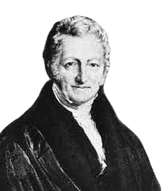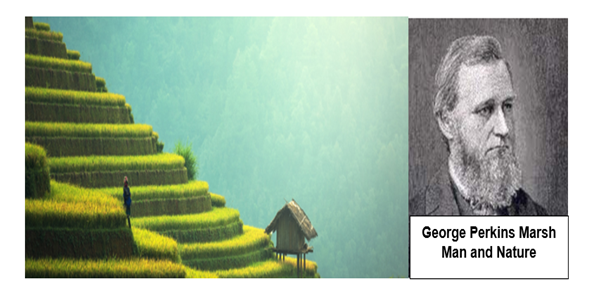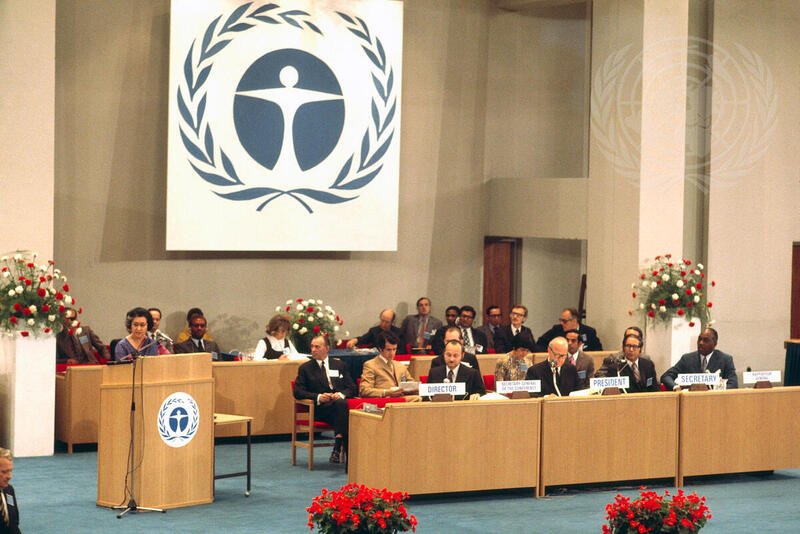The History of Sustainable Development You Should Know
Sustainable development has been an important concept for centuries.
From Ancient Greece to the present day, sustainable development has evolved and shaped a new way of living that benefits both people and the planet. It has been a part of human history since the Ancient Greek civilization.
Today, sustainable development is more important than ever as it can help us create a better future for generations to come.
As communities across the world strive to tackle climate change and other environmental issues, sustainable development can provide a powerful tool for promoting long-term solutions.
By taking advantage of renewable resources and prioritizing efficiency, sustainable development can help ensure that our communities remain healthy for generations to come.
With its potential to reduce poverty, increase prosperity and protect the environment, it is essential that we focus on sustainable development and ensure that we make progress towards achieving a more sustainable future.
Meanwhile, sustainable development is a socio-economic development model that seeks to achieve a balance between the needs of the present without infringing on the rights of future generations.
Concerns over sustainable development have been around for decades with several international initiatives.
But in 1987, the UN General Assembly made major progress when they officially defined the concept in the Brundtland Report.
The early conception of sustainable development relates to sustainable economic growth. This means not only a healthy economy but also a long-lasting one that will survive in the long term.
However, sustainable development has evolved into a process of change – an improvement in which the exploitation of natural resources does not exceed the carrying capacity of the system in which they exist.
Thus, sustainable development is achieved when natural resources are used in an intelligent and efficient way to avoid depletion and environmental hazards.
When there are no or few natural resources left, the process stops.
The idea of sustainability is a subject undergoing continuous debate and change.
History can offer us knowledge and an understanding of what sustainability means, allowing us to predict future trends and understand flaws in the idea. It will also help us to be prepared for the future.
This article explores the history and definition of sustainable development from ancient Greek times to today’s times.
The Ancient Greek Perspective on Sustainable Development

Plato’s Republic is a dialogue that was a classic work of philosophy written by Plato around 375 BC. It is the longest of his dialogues where Socrates discusses the idea of a just society. He explains that a just society is one that promotes equality and justice.
The dialogue argues that justice in society requires each person to perform their designated role, or job well. That is, people should do what they are naturally suited for, which will make them happy and good at what they do.
So long as this natural division exists in society, then there will be no need for any other form of justice or law and order.
Plato’s Republic is not the only work that discusses the idea of justice. In fact, Aristotle also has an interesting perspective on what constitutes justice.

These philosophers have similar ideas about what constitutes justice but they disagree on how to achieve it.
Plato argues for a just society through education and control while Socrates believes in democracy and equality for all citizens regardless of their social status or background.
Thomas Robert Malthus’ Perspective on Population and Sustainable Development
The modern day’s concerns about how the evolution of our civilization might affect the environment and resources on Earth were sparked around 200 years ago.
Thomas Robert Malthus (1766-1834), was a rural pastor, an esteemed demographer, and political economist. He authored: “An Essay on the Principle of Population”, which discussed sustainable natural resources in 1798.

Thomas Malthus predicted that a population explosion, coupled with limited food production, would inevitably lead to starvation or at least a lower average lifestyle.
He believed this because he thought growth in population would outpace the food supply.
People are usually constrained by misery, vice, and moral restraint. Malthus argued that while the population grows exponentially, the food supply increases arithmetically.
However, Malthus’ theory has been challenged by past years’ technological advancement.
The recent past has seen a number of major advancements.
For example, farming techniques have been improved, the equipment has been invented to make working easier, and agricultural science has continued to advance.
Thus, these changes in the face of population growth mean that production is increasing more rapidly than the world population.
Perkins Marsh’s Perspective on Sustainable Development
George Perkins Marsh was one of the first to put forth the theory of sustainable development.
Perkins Marsh was a US diplomat and, an economist who served as the American ambassador to Italy, Austria-Hungary, and Switzerland.
He is also known for his work in the field of sustainable development. In 1847, he published a book titled “Man and Nature” in which he explored the impact of human activity on nature.

Perkins believed that society should be responsible for the natural world by balancing economic growth and environmental protection. He argued that the Earth’s natural resources were not limitless, and that man’s economic growth and development would eventually lead to the end of the world.
Marsh’s work had a significant influence on later thinkers of sustainable development like John Stuart Mill and Charles Darwin.
The Emergence of the Modern-day Sustainable Development

The Stockholm Conference
In 1972, the first-ever international conference devoted solely to environmental sustainability was hosted in Stockholm and attended by 113 countries, as well as 19 international organizations’ representatives.
A group of 27 experts came together and had an in-depth discussion on the correlation between environment and development. They argued that although there were instances where these two priorities clashed, they are ultimately interconnected and affect each other.
The Stockholm Conference led to the creation of the United Nations Environmental Program (UNEP) which provides initiatives on environmental protection.

The Stockholm Declaration is the outcome of the first global environmental conference, the United Nations Conference. The declaration had 8 proclamations in regard to the natural environment. This means, the Stockholm Conference was the first International Conference Devoted Solely to Environmental Sustainability.
UNEP’s mission is to improve the quality of life for people across the world while taking steps to ensure that those same benefits extend to future generations.
Thus, the Stockholm conference was influential in inspiring the adoption of international agreements on sustainable development such as dumping, ship-related pollution, and the endangered species trade.
Principle 13 of the conference states that development plans should integrate and coordinate different areas to protect the environment.
However, important environmental aspects were not taken into account and thereby neglected by the participants in their statements.
Indeed, a more environmental and economical view that can incorporate both of these points is clearly needed!
The World Commission on Environment and Development (Brundtland Commission)
The United Nations established the World Commission on Environment and Development in 1983 to examine the effects of sustainable development.
The commission, named after its chairperson Gro Harlem Brundtland, helped set priorities for human health and social equity. It published the Brundtland Report in 1987.
The report offers a very influential definition of sustainable development as the development that satisfies the present needs in a way that doesn’t negatively impact the lives of future generations.
Within this period, the concept of sustainable development became popular because in the late 1980s there was a lot of concern over global environmental change and so it allayed some fears.
This came as a result of the new, alarming phenomenon where humans were now impacting their environment.
However, Brundtland Report was criticized as vague and too optimistic.
The Commission appeared to have sought an optimistic outcome in order to be taken seriously, but they had to be vague and contradictory in order not to come across as too pessimistic.
UN Conference on the Environment and Development (Rio Earth Summit)
The United Nations conference on the environment and development (UNCED) took place in Rio de Janeiro, Brazil during the summer of 1992, which was a huge historical event with 114 heads of state in attendance. A total of 114 heads of state and 10,000 other government representatives attended the UNCED. There were also 178 countries and 1400 NGOs in attendance.
The conference was on an unprecedented scale as international leaders from different governments and sectors converged to make an impact in what was often regarded as the Rio Earth Summit.
The title “Environment and Development” is connected to the North-South bargaining at the UN.
There is a divide between demands for international action on the environment combined with claims for development comparisons and technology.
The most important outcomes of the Conference include the Rio Declaration, Agenda 21, and the Commission on Sustainable Development. All three are focused entirely on sustainable development.
The Rio Declaration’s outcome includes principles of sustainable development.
The Agenda 21 outcome lists a variety of ideas on how to create a more sustainable future. The 500-page document outlines and achieves the goal of sustainable development.
This is an important document with a range of targets for sustainable economic growth, quality of life, the protection of global commons, and management of human settlements. It’s essentially a map to achieving a better world.
In addition, Sustainable Development Commission was also set up.
The participants at the Rio summit attempted to find ways to implement sustainable development by presenting a set of principles.
The Rio Summit was less about debating what actually constitutes sustainable development. But more about exploring different approaches to achieving it.
However, critics argued that sustainability can only be accomplished by allocating resources more efficiently and reducing our environmental impact.
This can be accomplished best by implementing a combination of economic, social, and political policies!
The Emergence of the Conference of the Parties (COP)
The United Nations Framework Convention on Climate Change (UNFCCC) is a treaty that recognizes the existence of anthropogenic climate change and provides the framework for international cooperation in response to this phenomenon.
The Convention was adopted in 1992 at the Rio de Janeiro’s Earth Summit, with the treaty coming into effect two years later and ratified by 196 countries.
The COP is an international meeting of the “parties” to the United Nations Framework Convention on Climate Change (UNFCCC). It is the supreme decision-making body of the Convention and consists of delegates from all member countries.
The first COP took place in Berlin from November 28 to December 11, 1995. The COPs have been held every year since 1995 to examine whether or not member countries are fulfilling their obligations under the Convention
Some of the COPs have been in the framework of formal meetings of the parties to UNFCCC, whereas others have taken place as ad hoc meetings convened by a head of state or government for a particular reason.
COPs are always building up from the decisions and resolutions of previous COPs, which is why they are always updated.
The Kyoto Protocol was adopted at COP3 in 1997, one of its better-known and most controversial agreements.
Now, let’s look at this agreement
The Kyoto Protocol
The Kyoto conference in 1997 resulted in an agreement by developed countries to cut the emissions of greenhouse gases, with a framework known as the Kyoto Protocol. These specifics were to be determined at a later date.
Initially, the European Union demanded a 15% cut, while the U.S. called for stabilization and no cuts.
Eventually, there was an agreement to reduce emissions beyond the levels of the 1990s for the 2008-2012 periods. The agreement stipulated that industrialized countries would abide by a global reduction of 5.2%.
However, the Kyoto Protocol did little to directly explain the operational details of how compliance would be achieved.
This led to a high level of confusion over what needed to be done and created a barrier for those who wanted to comply.
Despite 84 countries signing the protocol, many others were reluctant to take this approach
For example, the USA was reluctant to ratify the Kyoto Protocol, but the EU ratified and passed it.
Despite ratifying and passing the Kyoto Protocol, the EU still has a way to go with meeting CO2 emission goals.
Meanwhile, it’s predicted that the US will have far higher CO2 emissions by 2030, a growth of about 50% compared to 1990 figures.
The European Union, on the other hand, will increase by 18%. It’s also debated how effective the Kyoto protocol might be in reversing this trend.
Nonetheless, the Kyoto Protocol is one of the most controversial international agreements. One group believes that it’s too ecological, while the other group is afraid of climate change.
All subsequent COPs have updated it and the latest one is COP26, which was held in Glasgow, Scotland between 31st October and 12th November 2020.
The location and date of the past COPs are listed down below:
- COP 01: Berlin Mandate 28 Mar – 07 Apr 1995
- COP 02: Geneva, Switzerland 08 Jul – 19 Jul 1996
- COP 03: Kyoto, Japan 01 Dec – 10 Dec 1997
- COP 04: Buenos Aires, Argentina 02 Nov – 13 Nov 1998
- COP 05:Bonn, Germany 25 Oct – 05 Nov 1999
- COP 06: The Hague, Netherlands 13 Nov – 24 Nov 2000
- COP 07: Marrakech, Morocco 29 Oct – 10 Nov 2001
- COP 08: New Delhi, India 23 Oct – 01 Nov 2002
- COP 09: Milan, Italy 01 Dec – 12 Dec 2003
- COP 10: Buenos Aires, Argentina 06 Dec – 17 Dec 2004
- COP 11: Montreal, Canada 28 Nov – 09 Dec 2005
- COP 12: Nairobi, Kenya 06 Nov – 17 Nov 2006
- COP 13: Bali, Indonesia 03 Dec – 17 Dec 2007
- COP 14: Poznań, Poland 01 Dec – 12 Dec 2008
- COP 15: Copenhagen, Denmark 07 Dec – 18 Dec 2009
- COP 16: Cancún, Mexico 28 Nov – 10 Dec 2010
- COP 17: Durban, South Africa 28 Nov – 09 Dec 2011
- COP 18: Doha, Qatar 26 Nov – 07 Dec 2012
- COP 19: Warsaw, Poland 11 Nov – 23 Nov 2013
- COP 20: Lima, Peru 01 Dec – 12 Dec 2014
- COP 21: Paris, France 30 Nov – 12 Dec 2015
- COP 22: Marrakech, Morocco 07 Nov – 18 Nov 2016
- COP 23: Bonn, Germany 06 Nov – 17 Nov 2017
- COP 24: Katowice, Poland 03 Dec – 14 Dec 2018
- COP 25: Madrid, Spain 02 Dec – 13 Dec 2019
- COP 26: Glasgow, Scotland 31 Oct – 12 Nov 2021
The 2000 Millennium Summit
The Millennium Summit was held in September 2000 in New York where the world leaders agreed on the Millennium Development Goals (MDGs). The goals were mostly set for 2015 with 1990 being a benchmark year.
These goals are achievable but quite reasonable. They work collaboratively and sustainably to address a variety of economic and social factors.
The MDGs prove that the livelihoods of the poor people have been obsessed with opportunity and lack of insecurity or vulnerability.
These goals attempt to strike a balance by considering the economic, social, and environmental pillars, centering around the health, safety, and prosperity of the poorest people of the world allowing them to grow, improve their skills, and live more securely.
These include:
- reducing the number of people living in poverty and hunger
- achieving primary education for all children and advancing gender equality
- reducing the number of childhood deaths and supporting maternal health.
- reducing the spreading of HIV/AIDS
- integrating the sustainable development principles into country policies
- halving the number of people without accessible drinking water.
One of the world’s most pressing concerns will be rebuilding trust between people, government, and businesses.
This is a very difficult problem to solve, but because it is so vital to achieving the MDGs, there needs to be a lot more focus on this in order for any progress to occur.
The Johannesburg’s World Summit on Sustainable Development (WSSD)
The World Summit on Sustainable Development was a defining moment in the business of taking action to grow and protect our global environment, health, and humanity.
Governments, businesses, and NGOs came together in Johannesburg in 2002 to commit resources to this initiative.
The Johannesburg Summit reiterated the MDGs and supplemented them with new ones. Halving the number of people without access to basic sanitation is one of them.
The Johannesburg Summit also pays attention to stopping the loss of biodiversity and the harmful effects of chemicals.
The WSSD helps fill the gaps in Agenda 21 and Millennium Development Goals by addressing new issues such as:
- halving the proportion of people without basic sanitation by 2015.
- using and producing chemicals in ways that prevent significant adverse effects on the environment and human health; and
- restoring or maintaining depleted fish stocks to the levels that can produce the maximum sustainable yield by 2015 at the latest.
The Johannesburg Conference emphasized the importance of economic growth and social equality, which appeared since the 1992 Conference.
The environment was a popular subject at the two previous UN conferences due to the cyclical attention brought forth by developed countries.
The World Summit on Sustainable Development incorporated the idea of sustainable development widely and was initially called the “implementation summit.”
It became clear that the Millennium Development Goals had already set up a framework for addressing any additional demands for financial resources and technology transfer.
Sustainable Development Goals
The 2030 Agenda for Sustainable Development is a framework for peace and prosperity. It is a global commitment by the UN Member States to strive for peace, inclusive growth, and environmental protection.
The 17 Sustainable Development Goals (SDGs), which are at the heart of the 2030 Agenda, provide a shared blueprint that aims to bring people and the planet into an era of sustainability.
These sustainable development goals are the main driving force for UN efforts, and act as a call to action for governments around the world – and both developed and developing countries – to work together.
They highlight how ending poverty requires an integrated approach that addresses strategic improvement in health, education, and the environment. This will involve fighting inequality and promoting economic growth, while simultaneously tackling climate change.
The SDGs build on previous work that countries and the UN have already done. This includes those by the UN Department of Economic and Social Affairs.
Specifically, the SDGs are built on:
- Rio Earth Summit: A plan for sustainable development was presented in 1992 at the Rio Earth Summit, where Agenda 21 was adopted by more than 178 countries. This is a comprehensive plan that aims to improve environmental protection and human lives
- MDGs: The United Nation’s Millennium Development Goals was adopted unanimously by the UN Member State at the UN Headquarters in New York in 2000. These initiatives are aimed at lessening extreme poverty by 2015.
- World Summit on Sustainable Development: The Johannesburg Declaration on Sustainable Development reaffirms the global community’s commitment to poverty eradication and environmental protection in South Africa in 2002. It was built on Agenda 21 and the Millennium Declaration, by stressing multilateral partnerships.
The Sustainable Development Goals are a set of 17 goals that all countries in the world have agreed to work towards.

These goals aim to end poverty, fight inequality and injustice and protect our planet including:
- Goal 1: No Poverty
- Goal 2: Zero Hunger
- Goal 3: Good Health and Well-being
- Goal 4: Quality Education
- Goal 5: Gender Equality
- Goal 6: Clean Water and Sanitation
- Goal 7: Affordable and Clean Energy
- Goal 8: Decent Work and Economic Growth
- Goal 9: Industry, Innovation and Infrastructure
- Goal 10: Reduced Inequality
- Goal 11: Sustainable Cities and Communities
- Goal 12: Responsible Consumption and Production
- Goal 13: Climate Action
- Goal 14: Life Below Water
- Goal 15: Life on Land
- Goal 16: Peace and Justice Strong Institutions
- Goal 17: Partnerships to achieve the Goal
Conclusion
Given the widespread coverage of the current impacts of climate change in the media, sustainability is high on a lot of peoples’ agendas at present.
But the timeline of sustainable development has seen different periods of human history.
Sustainable development spans from the ancient times of human history to the present day. Throughout history, different ideas have arisen about sustainability and how it can be achieved.
It has also been a topic of debate for many years. In order to understand what this term means, it is important to look at some significant moments in history that have caused different ideas about sustainability to be born.
This brought forth the most recent definition of sustainable development as the process of maintaining or restoring ecosystems so that natural resources are used without a decrease in the capacity of humans to meet their needs for food, water, air, materials, energy, and in most cases, recreation.


